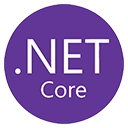In ASP.NET Core, the ControllerBase class serves as a base class for API controllers. It provides essential functionality for handling HTTP requests and responses, making it easier to build RESTful services. Unlike the Controller class, which is used for MVC applications that return views, ControllerBase is specifically designed for scenarios where the application primarily returns data, such as JSON or XML.
Key Features of ControllerBase
- Action Results: The
ControllerBaseclass provides methods to return various types of action results, such asOk(),NotFound(),BadRequest(), andCreated(). These methods simplify the process of returning standardized HTTP responses. - Model Binding: It supports model binding, allowing action methods to accept parameters that are automatically populated from the request data, such as query strings, route parameters, and request bodies.
- Validation: The class integrates with the validation framework, enabling automatic validation of model state and providing easy access to validation results.
- Dependency Injection:
ControllerBasesupports dependency injection, allowing you to inject services directly into your controllers.
Creating a Controller Using ControllerBase
To create a controller that inherits from ControllerBase, follow these steps:
Sample Code for a ProductsController
using Microsoft.AspNetCore.Mvc;
[ApiController]
[Route("api/[controller]")]
public class ProductsController : ControllerBase
{
// Action method to get all products
[HttpGet]
public IActionResult GetAllProducts()
{
var products = new[] { "Product1", "Product2", "Product3" };
return Ok(products); // Returns a JSON response with the product list
}
// Action method to get a product by ID
[HttpGet("{id}")]
public IActionResult GetProductById(int id)
{
if (id < 1 || id > 3)
{
return NotFound(); // Returns a 404 Not Found response
}
return Ok($"Returning product with ID: {id}"); // Returns a string response
}
// Action method to create a new product
[HttpPost]
public IActionResult CreateProduct([FromBody] string product)
{
// Logic to create the product would go here
return CreatedAtAction(nameof(GetProductById), new { id = 1 }, product); // Returns a 201 Created response
}
}
Explanation of the Sample Code
In the ProductsController class:
- Inheritance: The class inherits from
ControllerBase, which provides the necessary functionality for handling HTTP requests and returning responses. - GetAllProducts Action: This action method returns a list of products as a JSON response using the
Ok()method, which is a convenience method provided byControllerBase. - GetProductById Action: This method checks if the provided
idis valid. If not, it returns aNotFound()response. Otherwise, it returns a string indicating the product ID. - CreateProduct Action: This method simulates the creation of a product and returns a
CreatedAtAction()response, which indicates that a new resource has been created successfully, along with a location header pointing to the newly created product.
When to Use ControllerBase
You should use ControllerBase when building API controllers that primarily return data rather than views. It is ideal for creating RESTful services where the focus is on returning JSON or XML responses. If your application requires both API and MVC functionality, you can use ControllerBase for API controllers and Controller for MVC controllers that return views.
Conclusion
The ControllerBase class is a fundamental component in ASP.NET Core for building API controllers. It simplifies the process of handling HTTP requests and responses, providing a range of methods for returning standardized results. By leveraging its features, developers can create efficient and maintainable web APIs that serve data to clients in a structured manner. Understanding the purpose and capabilities of ControllerBase is essential for anyone looking to develop robust RESTful services in ASP.NET Core.

